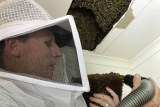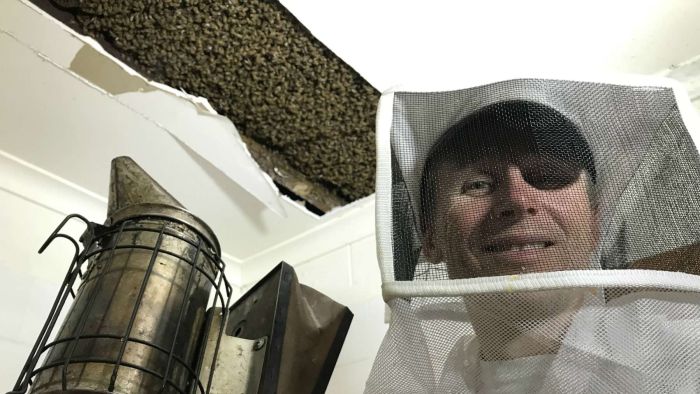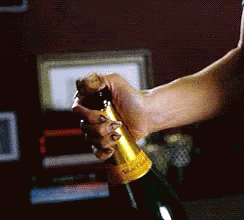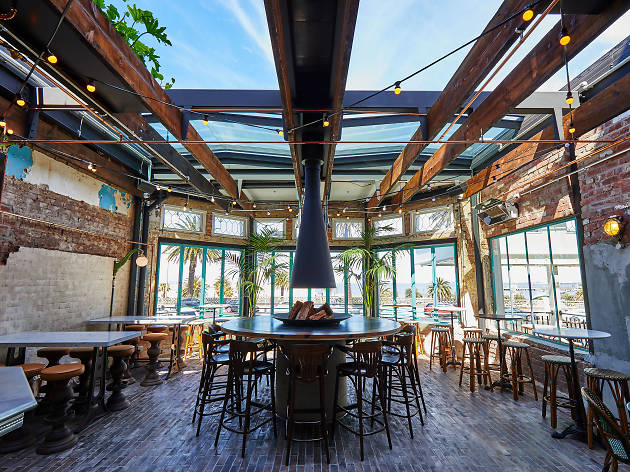FYI @BLOODSTAINED_DEVILS
Apiarist strikes gold finding more than 50,000 bees in a bathroom brood and ‘monster’ hive packed with honey - ABC Rural - ABC News
Jennifer NicholsUpdated about an hour ago

Scott Whittaker uses a vacuum to safely transfer the bees to a special hive for relocation.
(ABC Rural: Jennifer Nichols)
When Scott Whittaker started cutting into the ceiling of a Sunshine Coast house he had no idea he was about to encounter what “could only be described as a monster”, the largest colony of bees he has ever removed from a home.
So the Hinterland Bees apiarist filmed the fascinating procedure.
More than 50,000 bees had packed the ceiling of a bathroom with so much honeycomb that it took him nearly twelve physically-demanding hours to save and relocate the colony.
Just as he thought he was getting to the end, Mr Whittaker discovered honey stores that went back another 1.2 metres, dripping down onto his worksite — ladder in a shower cubicle.
He has been run off his feet since June, collecting wild swarms and cutting more than 30 bee hives from the cavities of homes on Queensland’s Sunshine Coast.
As Australians become more aware of the value of bees in the environment, demand for services like his has been booming.
It was the third hive he had cut out of a ceiling in one week, “which is starting to wear me out a bit,” Mr Whittaker laughed.
“It’s quite nice when they’re down nice and low in the wall and you can sit on a milk crate and cut them out that way. But when you’re working in the ceiling it is a bit of a contortion job.”
He works without gloves and said that bees are not aggressive, just defensive.
Vicki Arnold lived with the bees for over three years after seeing the original swarm enter a hole in the exterior wall of her Nambour home.
“A few people told us they’d go away, we’ve all been stung,” Ms Arnold said.
“They’ve built an empire here,” boarder Kyle Stiller joked.
“It’s always ‘fun’ when you finish work and you turn your light on and the bees come flying into the room.”
Ms Arnold’s mother tried calling a number of beekeepers before Mr Whittaker agreed to take on the challenge, arriving with an angle grinder, ladder and vacuum machinery to get to work.
He uses a thermal imager to identify the location of the brood nests, which the bees regulate at around 34 degrees Celsius, before exposing the hive and safely sucking the bees into a standard hive box with his industrial vacuum.
Where’s Queeny?
The key to speeding up the operation is tracking down the queen amongst thousands of worker bees and placing her into a small cage.
“Queens live for anywhere up to five years and once I find the queen I can work a lot quicker. I put her in a little cage and they won’t abandon her,” Mr Whittaker said.
“The female worker bees live for about six weeks and just work themselves to death, basically, for the sake of the hive. They’re very altruistic in that way.”
The brood comb full of eggs and larvae and pupae is removed and attached to standard bee hive frames with rubber bands.
“Once I’ve removed everything from inside here I set the hive up out near where the original entrance is, block off the original entrance, and then all the returning foraging bees will go into the hive box that I’ve set up there,” he said.
The bees were then taken back to his North Maleny property to remain in quarantine for three months.
“Everyone’s been growing aware of the potential decline of honey bees across the world,” Mr Whittaker said.
“It’s not as big a problem in Australia as it is in other parts of the world at this point in time, so I think it’s just really important that we stay ahead of the game in that regard.”
Apart from the risk of anaphylactic reactions to bee stings, disease is the biggest reason why European bee hives need to be monitored and managed.
“We do have one particularly really bad disease of honey bees which is called American foulbrood (AFB). It’s a bacterial based disease that is fatal to a hive,” Mr Whittaker said.
"If you find it in a hive you have to euthanase the bees, you have to burn the equipment or have it irradiated.
“A stronger colony will come in and rob the honey from the declining AFB-affected colony, take that back to their nest and infect that.”
Avoiding a ‘slime-out’
One local pest company now refers cases to him as an alternative to destroying hives, and Mr Whittaker warned of the consequences that can follow if bees are killed with chemicals.
“Once you poison a hive, after three months the insecticide wears off and the first thing that happens is small hive beetle, another pest of bee keepers, moves in,” he said.
"They defecate in the honey and release a yeast that ferments the honey and turns it into a foul ooze that’s known as a ‘slime-out’.
"It will spread out across the ceiling, turning it into a pitch black mess. So instead of replacing just a little bit of the ceiling you’re replacing the entire ceiling.
Australian Honey Bee Industry Council executive director Trevor Weatherhead said it was important to call for help.
“Act to ring an apiarist as soon as you see a swarm,” Mr Weatherhead said.
“If they can get the nest out straight away it’s good practice, and [it] helps the home owner as well.”
The experienced apiarist said brick houses were commonly targeted as potential homes by bees and he recommended preventative measures.
“The best thing for people to do is buying some aluminium fly wire and put that in the weeps hole so the bees can’t get in, but the wall can still breathe and the timber won’t swell up when it gets wet,” he said.
As for the ‘monster’ hive, Scott Whittaker was able to retrieve enough honey to provide the colony with a store of food to help it recover from relocation.
And he provided Vicki Arnold with an addition bonus — some sweet honey as well.
“I love my job. It’s always kind of exciting to open a new hive and see what’s in there,” he said.
“Finding the queen is always a nice, little cathartic moment, because it really is a bit of a needle in a haystack.”





 )
)



